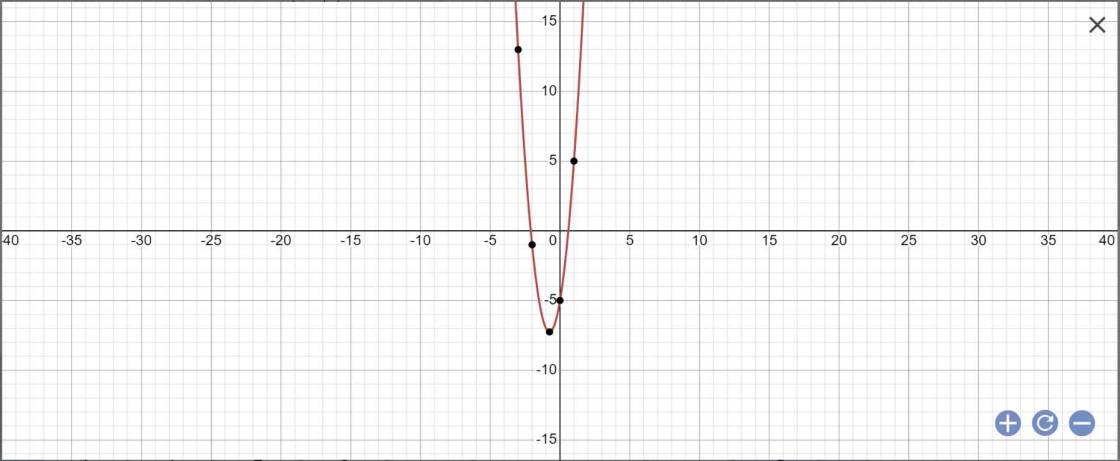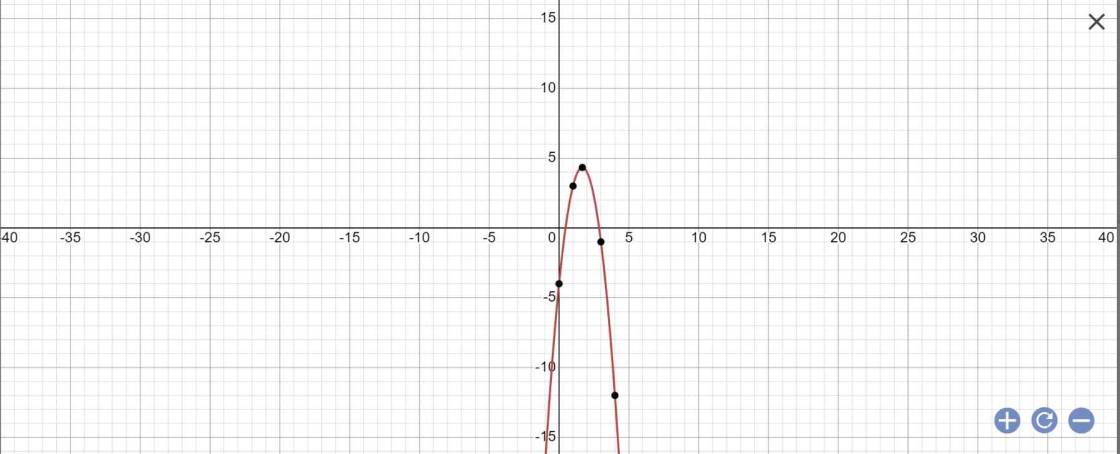Hãy nhập câu hỏi của bạn vào đây, nếu là tài khoản VIP, bạn sẽ được ưu tiên trả lời.

Tham khảo:
a) Ta có: \(f(0) = a{.0^2} + b.0 + c = 1 \Rightarrow c = 1.\)
Lại có:
\(f(1) = a{.1^2} + b.1 + c = 2 \Rightarrow a + b + 1 = 2\)
\(f(2) = a{.2^2} + b.2 + c = 5 \Rightarrow 4a + 2b + 1 = 5\)
Từ đó ta có hệ phương trình \(\left\{ \begin{array}{l}a + b + 1 = 2\\4a + 2b + 1 = 5\end{array} \right.\)
\( \Leftrightarrow \left\{ \begin{array}{l}a + b = 1\\4a + 2b = 4\end{array} \right. \Leftrightarrow \left\{ \begin{array}{l}a = 1\\b = 0\end{array} \right.\)(thỏa mãn điều kiện \(a \ne 0\))
Vậy hàm số bậc hai đó là \(y = f(x) = {x^2} + 1\)
b) Tập giá trị \(T = \{ {x^2} + 1|x \in \mathbb{R}\} \)
Vì \({x^2} + 1 \ge 1\;\forall x \in \mathbb{R}\) nên \(T = [1; + \infty )\)
Đỉnh S có tọa độ: \({x_S} = \frac{{ - b}}{{2a}} = \frac{{ - 0}}{{2.1}} = 0;{y_S} = f(0) = 1\)
Hay \(S\left( {0;1} \right).\)
Vì hàm số bậc hai có \(a = 1 > 0\) nên ta có bảng biến thiên sau:

Hàm số nghịch biến trên khoảng \(\left( { - \infty ;0} \right)\) và đồng biến trên khoảng \(\left( {0; + \infty } \right)\)

a: Tọa độ đỉnh là:
\(\left\{{}\begin{matrix}x=\dfrac{-6}{2\cdot4}=\dfrac{-6}{8}=\dfrac{-3}{4}\\y=-\dfrac{6^2-4\cdot4\cdot\left(-5\right)}{4\cdot4}=-\dfrac{29}{4}\end{matrix}\right.\)
Bảng biến thiên là:
| x | -\(\infty\) -3/4 +\(\infty\) |
| y | -\(\infty\) -29/4 +\(\infty\) |

b: Hàm số đồng biến khi x>-3/4; nghịch biến khi x<-3/4
GTNN của hàm số là y=-29/4 khi x=-3/4

a: Tọa độ đỉnh là:
\(\left\{{}\begin{matrix}x=\dfrac{-10}{2\cdot\left(-3\right)}=\dfrac{10}{6}=\dfrac{5}{3}\\y=-\dfrac{10^2-4\cdot\left(-3\right)\cdot\left(-4\right)}{4\cdot\left(-3\right)}=\dfrac{13}{3}\end{matrix}\right.\)
Bảng biến thiên:
| x | -\(\infty\) 5/3 +\(\infty\) |
| y | +\(\infty\) 13/3 -\(\infty\) |

b: Hàm số đồng biến khi x<5/3; nghịch biến khi x>5/3
Giá trị nhỏ nhất là y=13/3 khi x=5/3

a: \(y=-x^2+2x+3\)
y>0
=>\(-x^2+2x+3>0\)
=>\(x^2-2x-3< 0\)
=>(x-3)(x+1)<0
TH1: \(\left\{{}\begin{matrix}x-3>0\\x+1< 0\end{matrix}\right.\)
=>\(\left\{{}\begin{matrix}x>3\\x< -1\end{matrix}\right.\)
=>\(x\in\varnothing\)
TH2: \(\left\{{}\begin{matrix}x-3< 0\\x+1>0\end{matrix}\right.\)
=>\(\left\{{}\begin{matrix}x< 3\\x>-1\end{matrix}\right.\)
=>-1<x<3
\(y=\dfrac{1}{2}x^2+x+4\)
y>0
=>\(\dfrac{1}{2}x^2+x+4>0\)
\(\Leftrightarrow x^2+2x+8>0\)
=>\(x^2+2x+1+7>0\)
=>\(\left(x+1\right)^2+7>0\)(luôn đúng)
b: \(y=-x^2+2x+3< 0\)
=>\(x^2-2x-3>0\)
=>(x-3)(x+1)>0
TH1: \(\left\{{}\begin{matrix}x-3>0\\x+1>0\end{matrix}\right.\)
=>\(\left\{{}\begin{matrix}x>3\\x>-1\end{matrix}\right.\)
=>x>3
TH2: \(\left\{{}\begin{matrix}x-3< 0\\x+1< 0\end{matrix}\right.\)
=>\(\left\{{}\begin{matrix}x< 3\\x< -1\end{matrix}\right.\)
=>x<-1
\(y=\dfrac{1}{2}x^2+x+4\)
\(y< 0\)
=>\(\dfrac{1}{2}x^2+x+4< 0\)
=>\(x^2+2x+8< 0\)
=>(x+1)2+7<0(vô lý)

a.
Do (P) đi qua F, thay tọa độ F vào phương trình (P) ta được:
\(a.0^2+b.0+c=5\Rightarrow c=5\)
Do (P) có đỉnh \(I\left(3;-4\right)\)
\(\Rightarrow\left\{{}\begin{matrix}-\dfrac{b}{2a}=3\\a.3^2+b.3+c=-4\end{matrix}\right.\) \(\Leftrightarrow\left\{{}\begin{matrix}b=-6a\\9a+3b+5=-4\end{matrix}\right.\)
\(\Leftrightarrow\left\{{}\begin{matrix}b=-6a\\9a+3.\left(-6a\right)=-9\end{matrix}\right.\) \(\Leftrightarrow\left\{{}\begin{matrix}a=1\\b=-6\end{matrix}\right.\)
hay pt (P) có dạng: \(y=x^2-6x+5\)
b. Em tự giải
a: \(\left\{{}\begin{matrix}c=5\\\dfrac{-b}{2a}=3\\\dfrac{-\left(b^2-20a\right)}{4a}=4\end{matrix}\right.\Leftrightarrow\left\{{}\begin{matrix}c=5\\b=-6a\\-\left(36a^2-20a\right)=16a\end{matrix}\right.\)
\(\Leftrightarrow\left\{{}\begin{matrix}c=5\\b=-6a\\36a^2-4a=0\end{matrix}\right.\Leftrightarrow\left\{{}\begin{matrix}a=\dfrac{1}{9}\\b=-6a=\dfrac{-2}{3}\\c=5\end{matrix}\right.\)